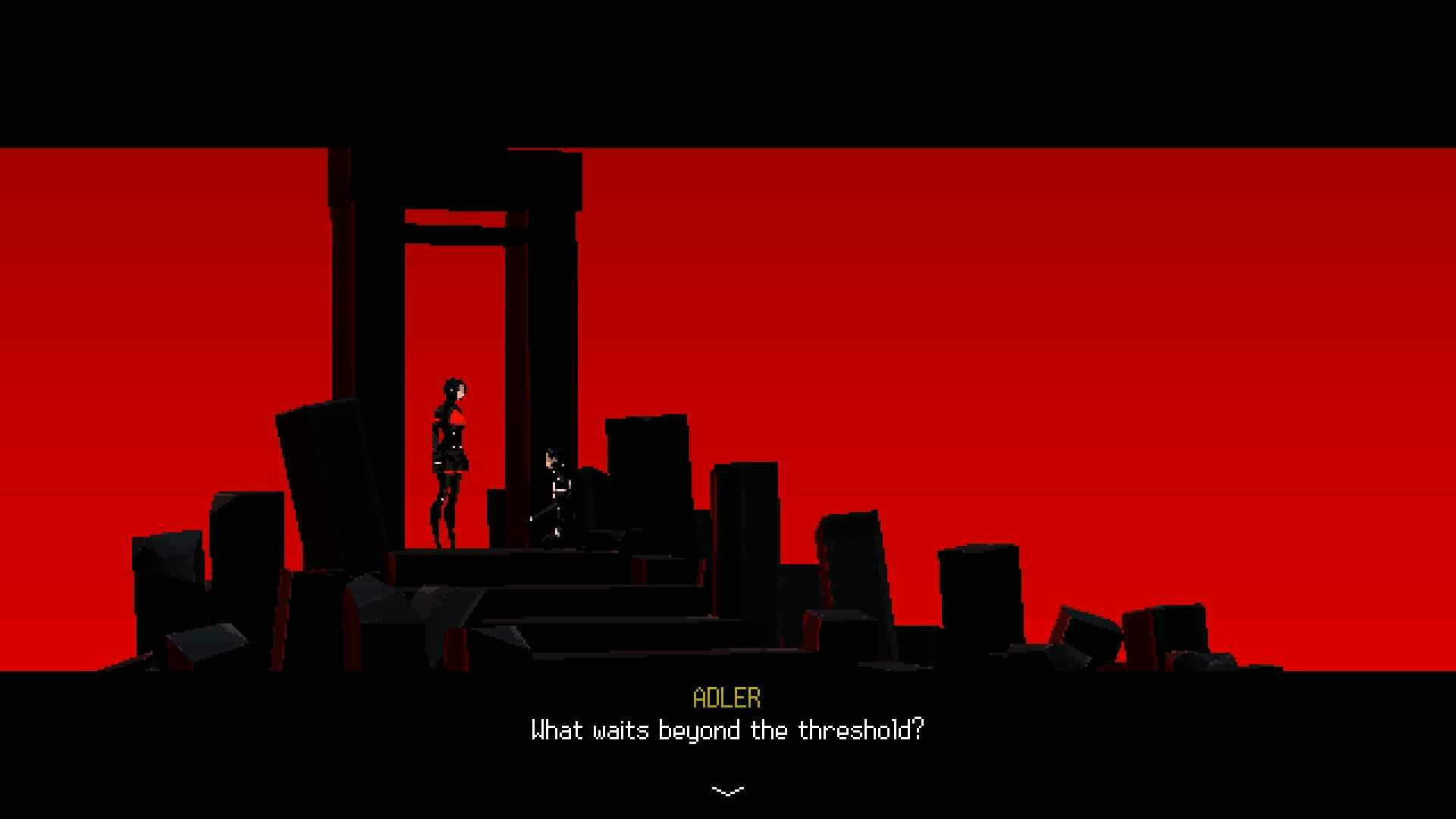
A pile of bodies is the only thing that softens my fall down the elevator shaft.
It isn’t until my adrenaline diminishes that I realize every lifeless corpse looks exactly like me. I don’t know what it means, but if I want answers, I need to make it off of this godforsaken planet alive.
Unsettling moments like this abound in the Signalis, an indie horror game and the first title from two-person developer rose-engine. A tumble down an elevator shaft is the closest thing to a reprieve you get as you slowly explore the dimly lit halls of a former labor camp infested with undead horrors. Graphically and mechanically, Signalis harkens back to PlayStation 1 horror games like Resident Evil with its focus on puzzles and claustrophobic exploration. But its unique additions to the formula make it a scary-good time and one of the best games of 2022.

A familiar feeling
Like most horror games, the elevator pitch for Signalis is simple enough to get players straight into the action: You play as Elster, an android in search of her missing partner after the two crash-landed on a frozen planet. Discovering a seemingly abandoned underground facility, Elster descends to each floor in search of answers while confronting undead monsters at every turn.
Signalis relies on the fundamentals of PS1 horror: item scarcity, exploration, and puzzles.
Elster is restricted to carrying six items at a time, which immediately puts pressure on the player to balance weaponry, ammo, healing items, and puzzle materials. I often hoarded ammunition to protect myself only to find that I could not pick up a keycard I needed to progress. Making the hard decision to destroy the entirety of my pistol ammunition, I resorted to slowly walking my way through the infested hallways and hoping that my steps would not be noticed. Enemies can go down pretty easily, but unless burnt to a crisp with a flare, they will always come back.

The special wrinkle to the formula is the introduction of a radio, which can be turned on at any point to find hidden information on a channel. This can be a safe code or a special frequency to combat certain enemy types. But everything in Signalis, from the radio information to hints found in documents is fleeting. Keeping physical notes could be the difference between an easy path forward or having to make a dangerous trip back to find a forgotten code. It’s a tactile enhancement that’s not for everyone, but it elevates the puzzling and compelling nature of Signalis.
One excellent quality-of-life feature is how the map fills itself out as you explore the facility and even automatically marks puzzle locations and what doors are unlockable with the right key. It’s helpful as a reference but cannot combat the constant dread that traversing the hallways instills in your heart.

The greater good
Everything in the world of Signalis is supposed to benefit a greater cause. Elster and those around her (alive and dead) are Replikas, androids built by an authoritarian government for the sole purpose of exploitation. Each is built with its own compromises in order to fit the job they are designed for. The game’s inventory limit on the player is a reflection of Elster’s own limitations. As a soldier, she is programmed to travel light, in order to preserve resources that in the eyes of her superiors are more precious than a replaceable android.
The facility was once a thriving labor camp that was hit with a mysterious plague that drove the Replika residents mad to the point most are undead creatures trying to destroy you, while the rare “sane” person you meet is just as dangerous — and perhaps even more unpredictable. Elster herself suffers from a series of unexplained visions of a girl with white hair and an island.

Signalis’ closest thing to an antagonist is the Replika Adler. His administrative role overseeing the facility is no longer needed due to the recent catastrophe, so he deteriorates after being unable to perform his programmed purpose.
The horror of Signalis is in the way its authoritarian government exploits its people, reducing Replika’s to expandable products. In a society that only values a worker's contribution to the cause, the individual is terrifying. Even those exploited by the system have no way to imagine a life outside of it. One Replika confesses she wants to succumb to the same infection her sisters did so that she can at least be one with them again. In this undead late-stage capitalistic nightmare, actually dying is the only way for a Replika to achieve connection and intimacy.

Begin again
Signalis’ final moments leave you with more questions than answers. It is a surreal finale that invites the player to think about what they have been through and how it affected them. As I watched the credits roll and digested everything I had experienced in the game’s brisk six hours, I felt the urge to start a new game and play just a little more. Maybe this time I could answer all my questions.
When the screen lit up again it was familiar but not the same. The game had quite literally changed.

This is the greatest trick Signalis pulls off. While reaching the “end” is satisfying, those who push a little further are given a continuation of the narrative that adds new areas, new stories, and new weapons to use. Some of the game’s best moments happen after you roll credits. This isn’t a punishment for those who stop after their first playthrough. Rather it is a reward for those who find something special in Signalis. Anyone who liked what they got from the brief taste of Signalis can sink their teeth into even more should they hunger for more, and what they find is more nourishing than you might think.
Signalis is a masterful recreation of classic survival horror. Mechanically, it ticks every box that the genre requires. Yet this indie gem shines in how it evolves the formula, both mechanically and narratively for more modern audiences. Developer rose-engine pushed beyond the boundaries of a simple homage to create something that stands on its own as the best horror game of the year.
9/10
Signalis will be released on October 27, 2022, for Nintendo Switch, PlayStation 4, Xbox One, PC, and Game Pass. Inverse reviewed the game on PC.
INVERSE VIDEO GAME REVIEW ETHOS: Every Inverse video game review answers two questions: Is this game worth your time? Are you getting what you pay for? We have no tolerance for endless fetch quests, clunky mechanics, or bugs that dilute the experience. We care deeply about a game’s design, world-building, character arcs, and storytelling come together. Inverse will never punch down, but we aren’t afraid to punch up. We love magic and science-fiction in equal measure, and as much as we love experiencing rich stories and worlds through games, we won’t ignore the real-world context in which those games are made.







